Importance of Reading and Adopting Contrast in High-End Home Lighting for 2026
Luxury lighting design has definitely evolved far beyond function in 2025, and it's almost certain to evolve even more, as 2026 is fast arriving. it is already a defining element of interior architecture, mood curation, and personal expression. Where once high-end lighting simply meant chandeliers and recessed fixtures, today’s upscale homes demand a more nuanced, intentional approach. From the rise of LED technologies in the 2010s to the integration of human-centric lighting in the 2020s, we've seen lighting transform into an emotional and sensory design tool.
As we near 2026, the current industry of home lighting is shaped by three core forces: intelligent systems, emotional resonance, & layered, immersive atmospheres. Homeowners and designers alike are embracing smart lighting ecosystems that adapt in real time—responding to mood, natural light conditions, and even biometric data. But beyond technology, there’s a growing recognition that the most compelling spaces are those that play with contrast: the delicate tension between light and shadow, warm and cool, soft and intense.
In 2026, contrast will not be just a trend—it’s going to be a necessity. It’s the difference between a room that looks good and a room that feels unforgettable. This article will look into why understanding and applying lighting contrast is now essential in creating high-end home environments that are visually striking, emotionally intelligent, and future-ready.
What Is Contrast in Lighting?
In lighting design, contrast refers to the dynamic interplay between opposing visual elements—light and shadow, brightness and dimness, warm and cool tones, soft and hard edges. It’s the deliberate use of difference to create visual interest, highlight focal points, and shape the perception of space.
Rather than bathing a room in uniform illumination, high-contrast lighting draws the eye, adds dimension, and creates a layered experience. Think of a softly lit sculpture casting a deep shadow on a nearby wall, or a warm pendant lamp glowing against a cooler, bluish ambient backdrop. These contrasts guide attention, add depth, and infuse the space with emotion.
From a perceptual standpoint, contrast helps define shapes, textures, and spatial boundaries. A well-balanced mix of light and dark can make rooms appear larger, more structured, or more intimate. High-end interiors often rely on contrast to accentuate architectural features, reveal material richness, and convey a sense of drama or calm, depending on the composition.
Emotionally, contrast is a powerful storytelling tool. Harsh lighting with sharp shadows can evoke tension or mystery, while gentle contrasts may foster warmth and tranquility. In luxury settings, contrast enables curated emotional experiences, allowing lighting to adapt throughout the day—energizing in the morning, contemplative at dusk.
Why Reading Contrast Is Crucial in Design
In luxury home design, "reading contrast" means more than noticing where light hits or shadows fall—it’s about understanding how light interacts with every surface, texture, and material in a space. It's a skill that combines aesthetic sensibility with technical insight, helping designers and homeowners craft environments that feel intentional, harmonious, and deeply refined.
Different materials react to light in dramatically different ways. Polished marble reflects and amplifies brightness, often intensifying highlights and creating dramatic light pools. In contrast, matte wood absorbs more light, softening the overall effect and reducing glare. Fabrics, metals, glass, and wall finishes all have their own response curves to both brightness and color temperature. A cool white LED might make a grey concrete wall look sterile, but the same wall under a warm amber light could feel rich and earthy.
Light temperature also plays a key role. Warmer tones (2700K–3000K) tend to enhance wood grains and bronze fixtures, while cooler tones (4000K–5000K) emphasize sharpness and clarity—ideal for highlighting modern materials like chrome, glass, or polished stone. Balancing this interplay requires a keen eye for contrast, especially when aiming to layer lighting across a room without visual conflict.
Beyond aesthetics, reading contrast also has functional benefits—especially when it comes to visual clarity and eye comfort. In luxury homes, where both form and function matter, lighting must not only flatter the space but support comfortable living. Poor contrast can cause eye strain, particularly in task areas like kitchens, reading nooks, or vanity zones. This is especially critical for aging residents, whose vision becomes more sensitive to glare and uneven lighting. Designing with controlled, readable contrast ensures better depth perception and reduces fatigue—while still maintaining elegance.
Benefits of Adopting Lighting Contrast
a. Enhanced Spatial Depth
Lighting contrast introduces dimensionality to flat or overly uniform spaces. By placing light and shadow in dialogue, designers can create visual layering that gives rooms a sense of structure and depth. Shadows cast from furniture, soft pools of light along walls, or illuminated niches within darker surroundings all work together to form intimate zones and dramatic perspectives.
This technique can make large spaces feel cozier, or small spaces appear more expansive—all without any structural changes. Contrast becomes a tool to shape perception and set spatial hierarchies within open-plan living areas, staircases, or transitional spaces.
b. Mood and Atmosphere Control
Light directly influences mood, and contrast is the brushstroke that paints emotion into a room. Tonal variation—between cool and warm, bright and subdued—helps modulate the atmosphere throughout the day. A bright, high-contrast morning kitchen setting can energize daily routines, while a softly lit, low-contrast lounge in the evening invites relaxation and calm.
In luxury design, this emotional adaptability is essential. With the right lighting contrast, spaces can shift seamlessly from entertaining zones to peaceful retreats, supporting both the functionality and emotional well-being of the inhabitants.
c. Highlighting Architectural & Art Features
Strategic contrast draws the eye to what matters most. Whether it’s a sculptural staircase, an original artwork, or the intricate texture of a stone wall, contrast isolates and enhances key visual elements. Accent lights with sharper beams can spotlight these features against darker backgrounds, creating gallery-like moments throughout the home.
This approach elevates interior storytelling—each lit feature becomes part of the narrative, celebrated through contrast. In 2026, where curated minimalism and material honesty are on trend, lighting contrast ensures those details don’t go unnoticed.
d. Energy Efficiency Through Layered Lighting
Contrast also supports smarter energy use. Instead of relying solely on overhead fixtures to flood a room with brightness, a layered lighting strategy—combining ambient, task, and accent lights—creates contrast naturally while consuming less power. Dimmers, motion sensors, and zone-based smart controls further allow for light only where and when it’s needed.
This not only reduces energy waste but improves comfort, avoiding glare and over-illumination. In modern sustainable luxury design, contrast is both a visual and ecological win.
Common Mistakes to Avoid
While lighting contrast can elevate a high-end home to a truly immersive experience, missteps in execution can undermine even the most thoughtfully designed spaces. Avoiding these common pitfalls is essential for maintaining both visual harmony and functional comfort.
Over-lighting or Under-lighting
Too much light can flatten a space, washing out shadows and eliminating the depth that contrast creates. On the other hand, insufficient lighting leads to murky, impractical environments that feel cramped or uninviting. The key is balance—using just enough light to define zones and enhance materials, while allowing shadow to play a supporting role in creating depth and atmosphere.
Too Many Color Temperatures Clashing
Mixing multiple color temperatures (for example, warm 2700K in one area and stark cool 5000K in another) without a clear intention can result in a visually jarring and disjointed space. Each lighting tone evokes a different mood, and abrupt shifts can feel chaotic rather than curated. To avoid this, choose a cohesive temperature range and use contrast within that spectrum—varying brightness and direction rather than hue—for a more unified effect.
Relying Solely on Ceiling Fixtures
Ceiling fixtures provide general illumination but rarely offer the control or nuance needed for contrast-rich environments. Overhead lighting tends to flatten everything beneath it, reducing opportunities for depth and drama. Relying only on these sources often leads to a monotonous look. Instead, layer in floor lamps, wall sconces, uplights, and recessed accents to sculpt the space and create varied contrast levels throughout.
Ignoring How Natural Light Changes Contrast Throughout the Day
Natural light is dynamic—it shifts in intensity, angle, and color temperature as the day progresses. Designing without considering these changes can lead to areas that feel too bright at midday or too dim by dusk. For example, a reading corner flooded with sunlight in the morning might become unusably dark in the evening without proper artificial support. Adaptive lighting strategies, including automated shading and tunable LEDs, help maintain consistent contrast and comfort across all hours.
How to Implement Contrast in a High-End Home
Achieving elegant, functional lighting contrast in a luxury interior requires more than simply choosing stylish fixtures. It’s a deliberate design process that combines emotional intent, spatial planning, and technical precision. Here’s how to bring contrast to life in a high-end home:
a. Start with Intent
Every well-designed lighting plan begins with a question:
“What should this space feel like?”
Contrast isn’t applied randomly—it’s used to create specific moods and emotional experiences. A serene bedroom might use soft, low-contrast lighting with warm shadows, while a bold dining area could benefit from dramatic overhead accents and stark contrasts that add energy and sophistication. In luxurious settings, contrast becomes a way to express identity and lifestyle—whether that means understated elegance or striking minimalism.
By defining emotional goals upfront, you create a roadmap for how contrast should be used throughout each space.
b. Use Layering Strategies
True lighting contrast is built through layered lighting, where multiple sources interact to shape perception and mood. These layers include:
-
Ambient lighting: the general base illumination that sets the tone.
-
Task lighting: focused lights that support specific activities (reading, cooking, grooming).
-
Accent lighting: used to highlight art, textures, or architectural details.
By blending these layers—and incorporating natural light throughout the day—you introduce subtle or bold shifts in brightness and temperature. The result is a dynamic, immersive atmosphere that adapts to different uses and times of day.
c. Choose the Right Fixtures & Materials
Fixtures aren’t just light sources—they’re tools for modulating contrast.
Use elements like:
-
Dimmers to control intensity and transition smoothly between lighting scenes.
-
Diffusers to soften harsh beams and spread light more evenly.
-
Metallic or textured finishes to play with reflection and absorption.
-
Backlighting or cove lighting to create elegant glows and floating effects.
Material selection is equally important. Highly reflective surfaces (like polished stone or mirrored metals) amplify brightness, while matte or porous textures absorb light and deepen shadows. Choosing the right combination ensures a balanced contrast palette that feels cohesive and intentional.
d. Consult a Lighting Designer or Visual Ergonomist
To achieve truly refined results, professional guidance is invaluable. Lighting designers bring a trained eye to the subtleties of spatial contrast, material interaction, and fixture placement. They understand how to manipulate light to shape both aesthetic and functional outcomes.
For homes where comfort and clarity are critical—particularly for aging residents or those with visual sensitivities—a visual ergonomist can provide insight into contrast ratios that reduce strain and enhance usability without compromising style.
Investing in expert consultation makes sure that lighting contrast supports both well-being and visual impact, elevating the design to its highest potential.
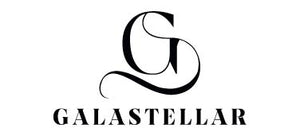











































































































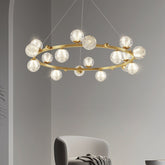

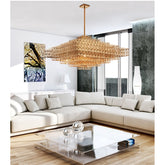

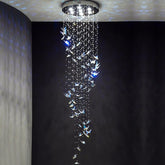

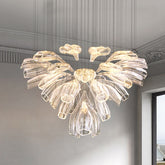

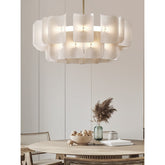

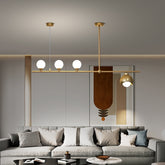

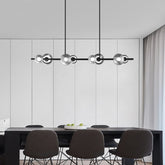

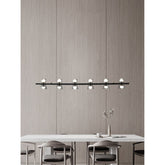

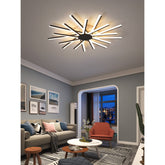

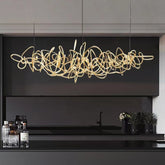




5 Comments
q28oa5
gtqhoz
rkkvbf
kboiw6
krn0ea